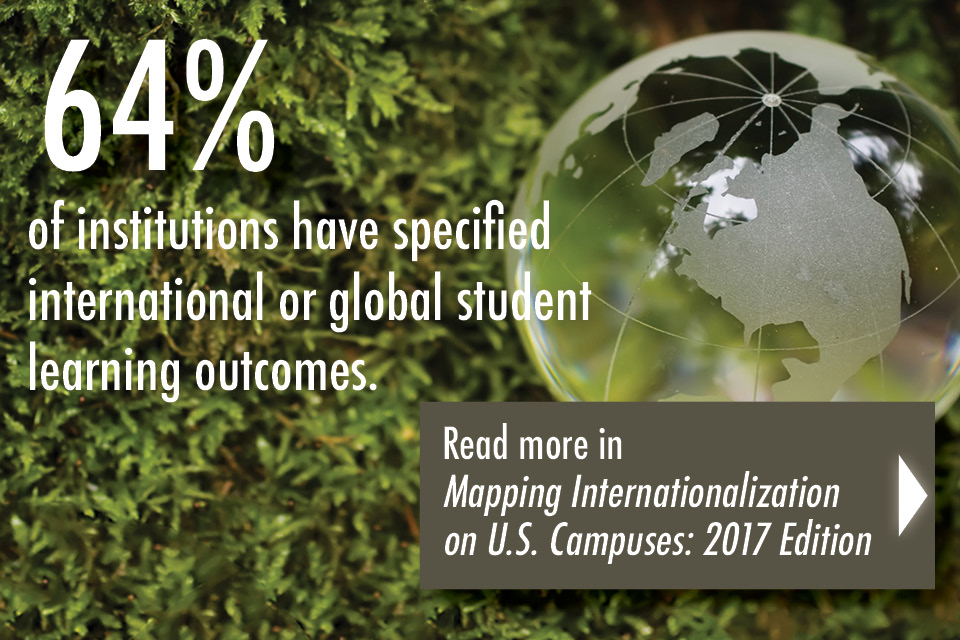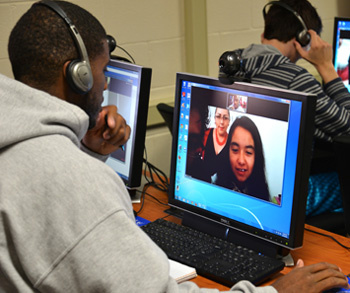Mapping Snapshot: Defining Global Learning Outcomes
This post is the third in a series of snapshots from ACE’s recent report, Mapping Internationalization on U.S. Campuses: 2017 Edition.

As internationalization gains traction on U.S. college and university campuses, leaders move to think globally about every aspect of academia—including the curriculum.
As illustrated in the 2017 Mapping data, 64 percent of the surveyed institutions have defined global learning outcomes and almost half of all institutions have enforced education requirements to ensure more students to reach internationally focused content.
The Mapping data also show that the overall percentage of institutions engaged in efforts to internationalize the undergraduate curriculum remained the same as in 2011— just over 50 percent. However, when we look into different institutional levels, we can see increases in associate and special focus institutions, while doctoral, master’s, and baccalaureate institutions all reported declines.
Efforts to internationalize the curriculum among surveyed schools include international/global tracks, concentrations, and certificates. In addition, compared to 2011, a greater percentage of institutions offered co-curriculum programs in 2016 (such programs are more common at doctoral institutions).
The most pervasive types of co-curriculum programs on campuses? International festivals or events and a meeting place for students interested in international topics, which require less intensive engagement and sustained learning. Programs that intensively engage students are less common.
Download the full report here.
If you have any questions or comments about this blog post, please contact us.

